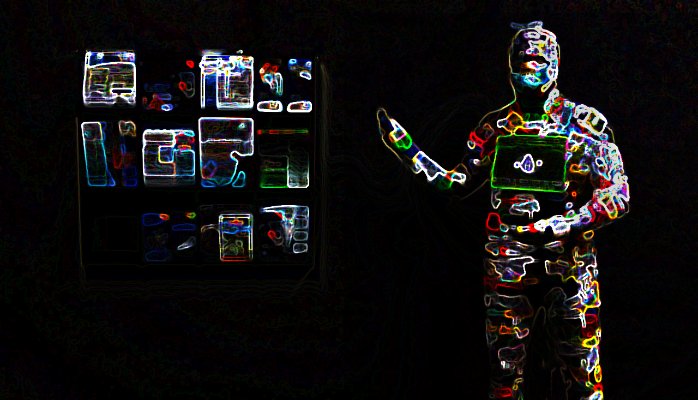I visited the wearable tech show, along with my colleagues at GES yesterday, purely as a visitor for a change.
I’m a tech fan. I wanted to see what was new out there but also where we might be able to enhance what we, as an industry and a company, already offer.
I’ve also quite an interest in fitness tech at the moment, as I’ve entered a few triathlons this year, so it was great to catch up on some of the latest in tech trends for my personal use too! There were some great new products on display that instead of having to carry around clunky phones on your travels, you could add trackers to your trainers for example, which can then measure more than just your distance / time – so pretty interesting, but not the point of the post today!
The biggest “new thing” isn’t really that new, but is more I think, about how it’s being used.
Augmented reality and Virtual reality.
It’s being talked about everywhere you look. You only need to go back a couple of weeks to Mobile World Congress and the image of Mark Zuckerberg walking the aisles of a packed conference room with everyone encased in a headset combining the virtual with the real world, to see how popular this movement is.
It’s not necessarily new technology, but it is being used more and more. The major change though is how these advancements in software and technology are helping to streamline say warehousing, manufacturing or engineering (to name but a few). If you’re unaware, here’s an example of it in use. Ford, in their Immersion Lab, use virtual reality to get a sense of how customers experience their cars, so they can better understand what they offer. Or, in skilled trades, training can be supplemented with VR which can immediately save on training cost, but also can put students through real world environments from an early stage, guiding them exactly what to do, on real products. There’s loads of interesting blogs out there on this kind of thing – google it.
All pretty cool and pretty interesting, but how will that affect exhibitions?
Personally I don’t imagine visitors wandering a trade show floor with glasses wrapped around their head, if they don’t currently wear them that is. I can see it in a conference session, helping to immerse yourself in the experience the speaker is talking you through. You can finally go on that “journey” that so many people talk about at the start of their sessions.
And exhibitors? Well, this could revolutionise what we as an industry do.
I don’t want to give too much away here, we caught up with an industry expert and that interview is coming up, but…
No longer do exhibitors need to transport their giant printers or trucks or equipment with them to trade shows around the world. They could take a small stand.
For the cost of transporting their major piece of kit, they could afford to create the best VR/AR experience of their products and take a small stand, with electrics, some simple but great simple graphics and a few “goggles” to show their customers exactly what they do.
Is this the change in exhibitions everyone had been wondering about? It could disrupt some very profitable events, think reduction in stand sizes / designs / builds!
Before we run for the hills and cover our backs with locking in long term exhibitor contracts, it does offer us a great opportunity to look at new ways of sponsorship or getting visitors to exhibitors stands.
However, this is perhaps where we can change the model of charging exhibitors for good. We charge per lead, or rather, per value of lead!
We only need to look to China to see what they’re doing with WeChat. For the uninformed, WeChat has about 650million active monthly users. Whatsapp is looking at approx. 450million users, both figures according to mixed reports.
Some organisers are starting to trial this software to charge exhibitors. They don’t offer a stand price. Instead, all transactions taken at the show are processed through the app. As I understand it, this goes via the organiser, they take their cut and the rest of the monies goes back to the exhibitor. Win win for both. Not a very good show = low cost. Very good show = great sales for the exhibitor, great return for the organiser.
So this model seems set to revolutionise transaction based events, but the possibilities. Oh the possibilities…
I love our world of tech and what potential it offers us. I’ll keep visiting lots of different shows to see how people are doing things differently. Are you doing something differently? Want to talk about it?
Drop me a line!
